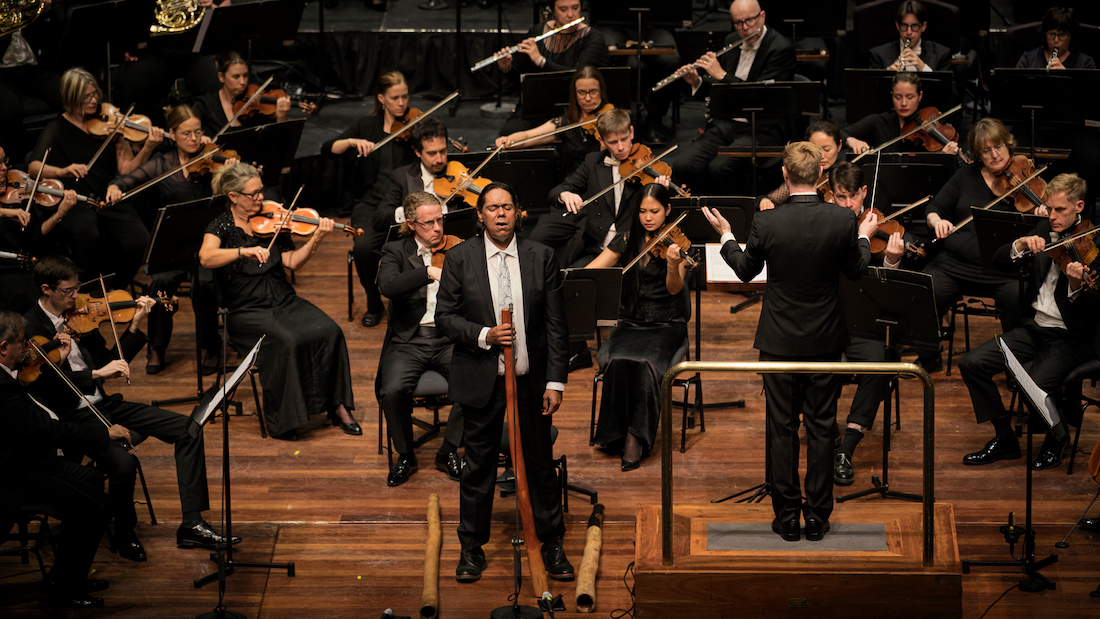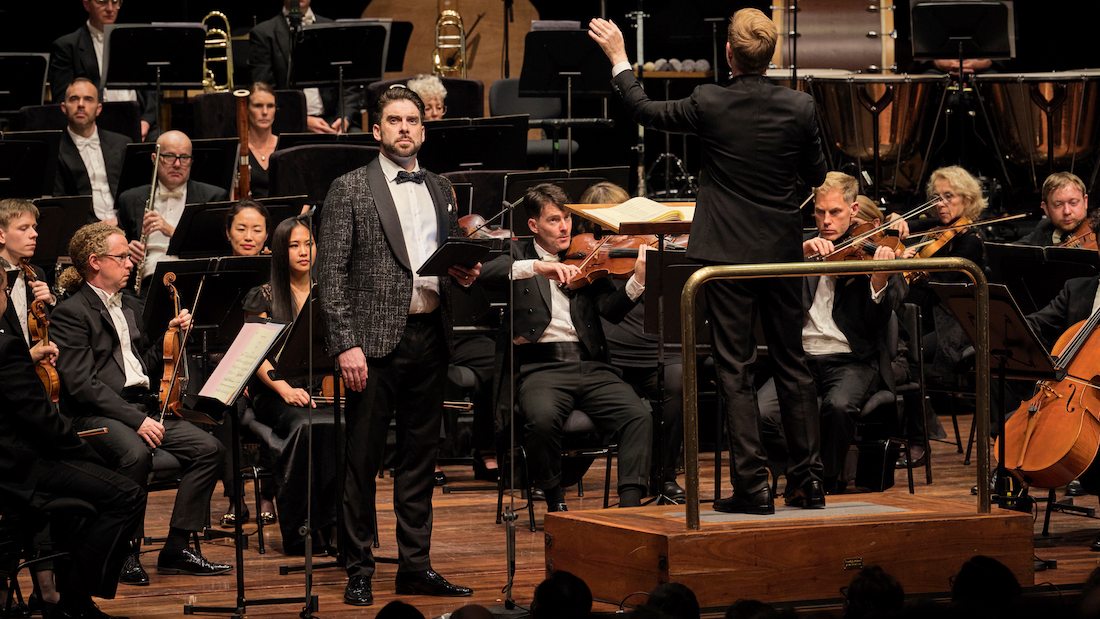
Review: WASO’s Magic Spirit at Perth Concert Hall
WASO's Magic Spirit at Perth Concert Hall
Saturday, October 7, 2023
The West Australian Symphony Orchestra fills the Perth Concert Hall at least twenty times a year performing both the great works of the classical tradition and new works by contemporary classical composers. A world-class orchestra now in its ninety-fifth year, WASO has been sticking to this schedule for the half century since it took up residence in the Concert Hall. Last Saturday night, under the baton of guest conductor Benjamin Northey, they presented a mixed program of Maurice Ravel, William Barton and Gabriel Fauré.
The show opened with Maurice Ravel’s Mother Goose suite. Ravel is of course best know for Boléro, a piece he wrote not all that seriously. After the 1980s Hollywood hit 10, it’s slow build ostinato has become almost a cliché. The five movement ‘Mother Goose’ also builds to a dramatic climax but, unlike Boléro, it is a gradual tease.
Starting ethereally soft, with pizzicato strings and piccolo flute, it builds in volume and intensity to a mini crescendo, then drops back to begin again. This rise and fall repeats, each time with a tad more intensity, going a little higher. At times delicate and sublime – piccolo, French horn, woodwinds or harp underpinned by violins, violas and celli – at others fractious and wild, all of the above enhanced by timpani, bass clarinet, xylophone and a bank of six double basses. But it is only in the final Fairy Garden movement that the piece explodes with all seventy-two musicians playing full tilt.
This rich and warm resolution echoes Aaron Copeland, Antonin Dvořák and Pyotr Tchaikovsky. Bo Derek and Dudley Moore would have had a much better romp had this been their score.
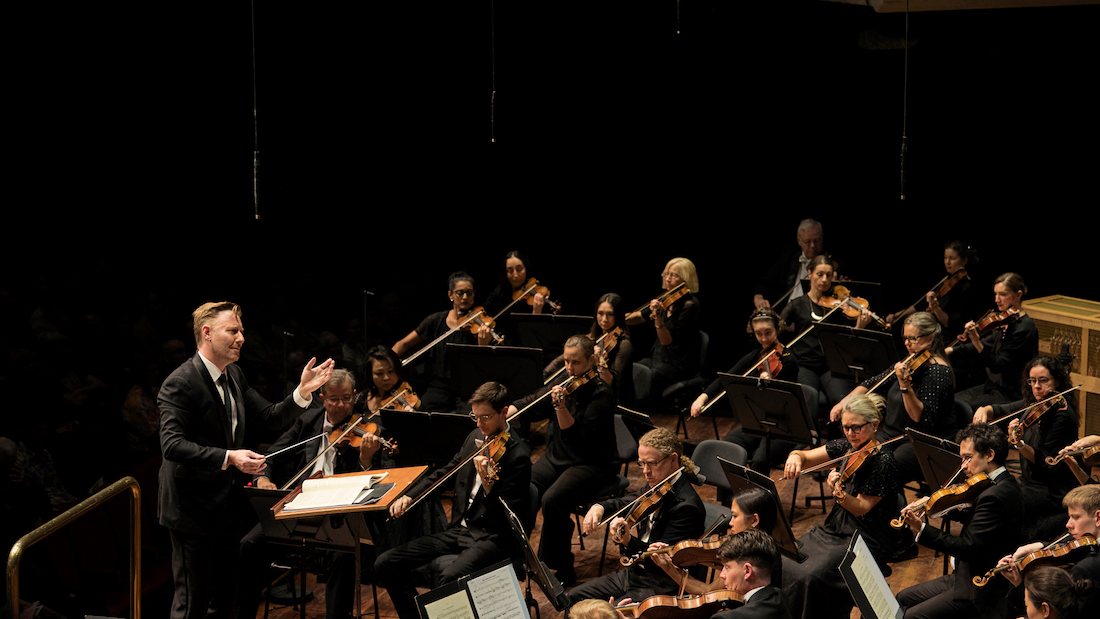
WASO's Magic Spirit at Perth Concert Hall
In the gap between pieces, when Northey left the stage, the six members of the brass section – two trumpets, two trombones, one bass trombone and a tuba – along with three extra percussionists took their seats, bringing the orchestra up to it’s full contingent of eighty-one players. After the obligatory re-tuning, the single note echoing across the stage in array of timbres and textures, the room hushed. Then, to loud applause, Northey returned to the podium following hot on the heels of legendary didgeridoo player, vocalist and composer of the night’s second piece, William Barton.
Born in 1981, Barton learnt didge at an early age from his uncle, an elder of the Wannyi, Lardil and Kalkadunga people. Since then he has performed with traditional dance groups and fusion/rock jazz bands, orchestras, string quartets, and mixed ensembles. He has appeared before at the Perth Concert Hall with the Australian Chamber Orchestra and WASO, most notably in a concert of Peter Sculthorpe’s magisterial Kakadu.
Barton composed Apii Thantini Mu Murtu (To Sing and Carry a Coolamon on Country Together) in 2020. It was first performed in June 2021 by the Queensland Symphony Orchestra under Northey – no doubt why he was invited to guest conduct this show. The work is about reconnection to country and pays homage and respect to indigenous language, the land and the dreaming. In the course of its twenty minutes, Barton plays three different didges, for want of better definitions, a tenor, a baritone and a bass.
The piece began gently with the higher strings and tenor didge but was quickly broken by a burst of the full wind and brass sections.
Normally in a classical concert, there is one moment where the hairs on the back of your neck stand up – the slow movement of Mahler’s fifth, the cantering horse in Beethoven’s Pastoral, the contrapuntal lines of Bach’s Jesu Joy of Man’s Desiring. With Barton’s piece, the hairs sprang to attention within a minute, as soon as the brass kicked in, and stayed rigidly upright until the final bar. It was extraordinary.
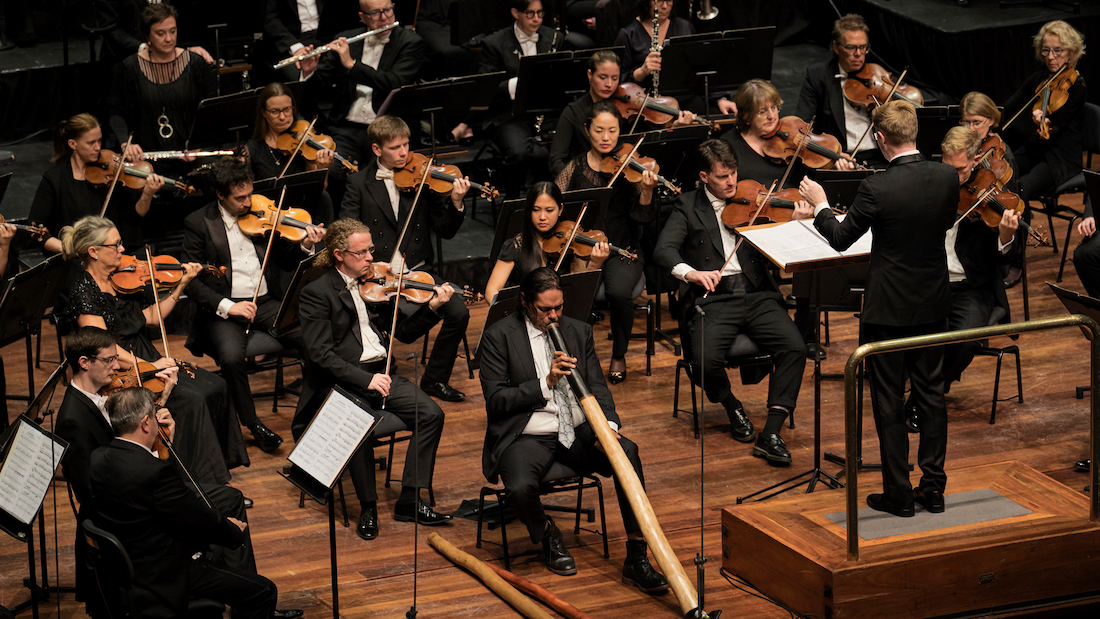
WASO's Magic Spirit at Perth Concert Hall
Although known as Australia’s premier didge player, this piece proved that Barton is also an outstanding symphonic composer who explores the depth and range of classical instruments as well as anyone. At times he was reminiscent of the great American minimalist John Adams, himself up there with Glass, Pärt and Taverner as one of the foremost contemporary classical composers.
The highlight moment was when the trombones and didge fell into a sliding dual. An arresting and original combination, unconditionally brilliant, especially at the peak when the full band stopped dead in their tracks, almost mid-phrase, held the silence for a few seconds, burst back into the full slide at full volume, then broke into silence again. Spellbinding and original.
As the piece evolved, like the Ravel it built in intensity. The question of how it would end though began to tease the audience. Would it go out in a blaze of fractious glory, or quieten down? Barton made the most unexpected and perfectly brilliant choice. After swapping didges regularly throughout, he placed the tenor on the stage, slowly stood and began to sing. A solo indigenous voice underpinned by strings. The flute, horn and woodwind players similarly placed their instruments on the stage and formed an unexpected choir.
A solo indigenous voice supported by a chorus of white voices. What an apt, brilliant and precise artistic statement to make in this of all weeks in our nation’s life. You would hope they could hear it in every city and hamlet across this wild red land.
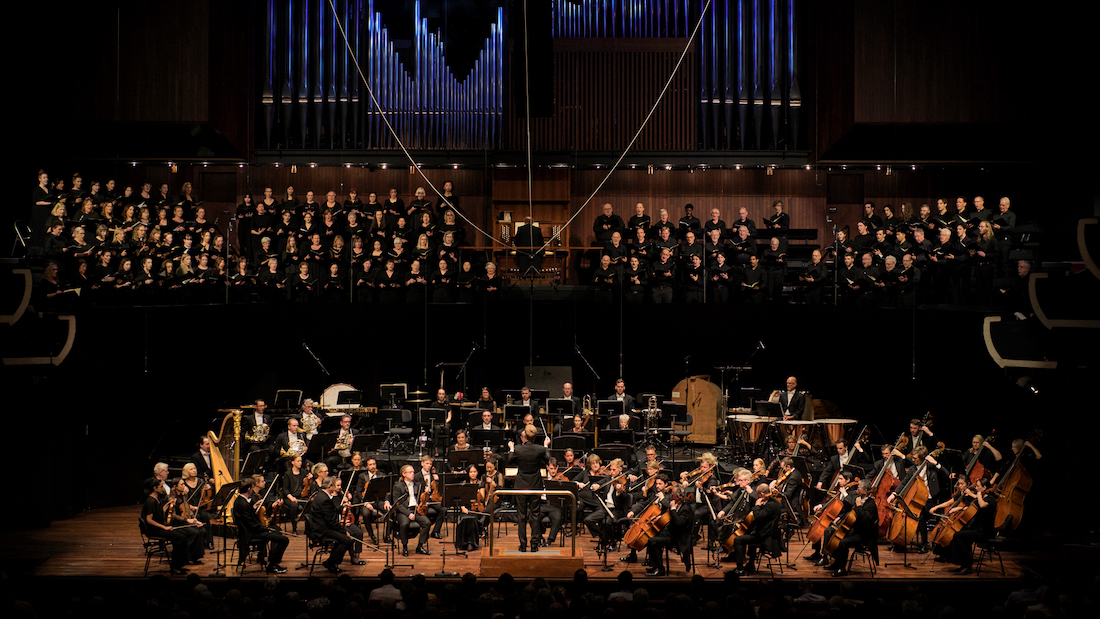
WASO's Magic Spirit at Perth Concert Hall
At the end, Barton and the orchestra received a five-minute standing ovation.
The second half of the concert was given over to Fauré.
As the bells rang through the foyer summoning the audience back to their seats, a smaller orchestra of maybe sixty players returned to the stage. But they were shortly followed in the choir stalls by the organist and 126 singers of the WASO Chorus and UWA Symphonic Chorus. It’s pretty impressive to see and hear some 190 people working in unison to create in the moment a single work of art. Little compares to it.
The two Fauré pieces they performed, Cantique de Jean Racine and the 1900 version of his Requiem, were entirely beautiful. The string-heavy orchestra made the perfect bed for the angelic voices soaring behind and above them. The seven-movement requiem contained two sections with the featured baritone, Samuel Dundas, and one with the statuesque Australian/American soprano Rachelle Durkin. It was amazing the way Durkin’s shimmering turquoise dress bought into focus the white tie and tails of the male members of the orchestra, the black cocktail gowns of the female members, and the uniform black of the choirs.
Both pieces were sublime, a chorus for the angels. Even the most ardent atheist or heavy metal fan would be elated to shuffle off this mortal coil with such exquisite music ringing in their ears.
IAN LILBURNE
Photos by Rebecca Mansell


